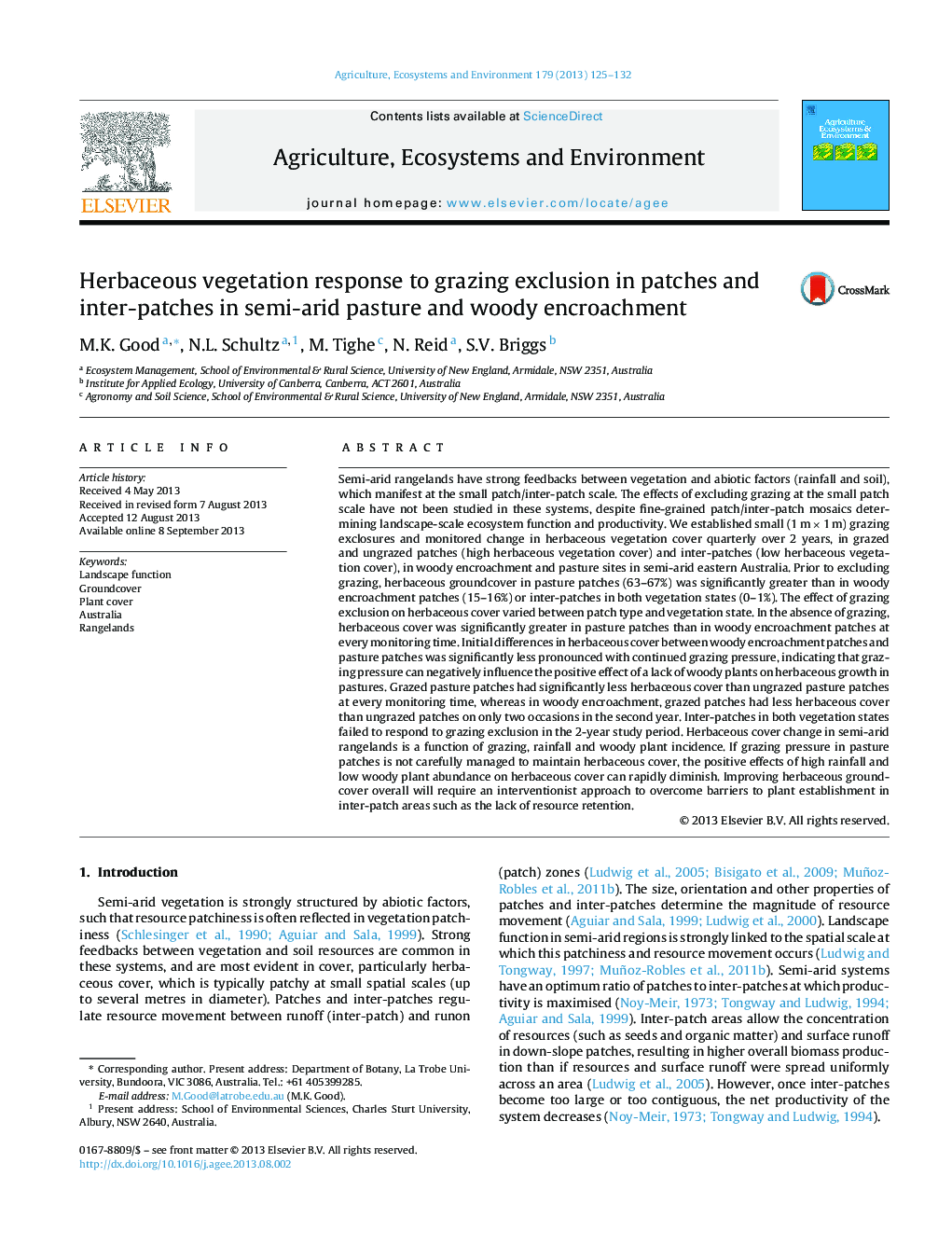| کد مقاله | کد نشریه | سال انتشار | مقاله انگلیسی | نسخه تمام متن |
|---|---|---|---|---|
| 8488072 | 1552073 | 2013 | 8 صفحه PDF | دانلود رایگان |
عنوان انگلیسی مقاله ISI
Herbaceous vegetation response to grazing exclusion in patches and inter-patches in semi-arid pasture and woody encroachment
ترجمه فارسی عنوان
پاسخ گیاهی گیاهان به جداسازی چرای در تکه ها و تکه های مصنوعی در حیوانات نیمه خشک و درشت چوب
دانلود مقاله + سفارش ترجمه
دانلود مقاله ISI انگلیسی
رایگان برای ایرانیان
کلمات کلیدی
موضوعات مرتبط
علوم زیستی و بیوفناوری
علوم کشاورزی و بیولوژیک
علوم زراعت و اصلاح نباتات
چکیده انگلیسی
Semi-arid rangelands have strong feedbacks between vegetation and abiotic factors (rainfall and soil), which manifest at the small patch/inter-patch scale. The effects of excluding grazing at the small patch scale have not been studied in these systems, despite fine-grained patch/inter-patch mosaics determining landscape-scale ecosystem function and productivity. We established small (1 m Ã 1 m) grazing exclosures and monitored change in herbaceous vegetation cover quarterly over 2 years, in grazed and ungrazed patches (high herbaceous vegetation cover) and inter-patches (low herbaceous vegetation cover), in woody encroachment and pasture sites in semi-arid eastern Australia. Prior to excluding grazing, herbaceous groundcover in pasture patches (63-67%) was significantly greater than in woody encroachment patches (15-16%) or inter-patches in both vegetation states (0-1%). The effect of grazing exclusion on herbaceous cover varied between patch type and vegetation state. In the absence of grazing, herbaceous cover was significantly greater in pasture patches than in woody encroachment patches at every monitoring time. Initial differences in herbaceous cover between woody encroachment patches and pasture patches was significantly less pronounced with continued grazing pressure, indicating that grazing pressure can negatively influence the positive effect of a lack of woody plants on herbaceous growth in pastures. Grazed pasture patches had significantly less herbaceous cover than ungrazed pasture patches at every monitoring time, whereas in woody encroachment, grazed patches had less herbaceous cover than ungrazed patches on only two occasions in the second year. Inter-patches in both vegetation states failed to respond to grazing exclusion in the 2-year study period. Herbaceous cover change in semi-arid rangelands is a function of grazing, rainfall and woody plant incidence. If grazing pressure in pasture patches is not carefully managed to maintain herbaceous cover, the positive effects of high rainfall and low woody plant abundance on herbaceous cover can rapidly diminish. Improving herbaceous groundcover overall will require an interventionist approach to overcome barriers to plant establishment in inter-patch areas such as the lack of resource retention.
ناشر
Database: Elsevier - ScienceDirect (ساینس دایرکت)
Journal: Agriculture, Ecosystems & Environment - Volume 179, 1 October 2013, Pages 125-132
Journal: Agriculture, Ecosystems & Environment - Volume 179, 1 October 2013, Pages 125-132
نویسندگان
M.K. Good, N.L. Schultz, M. Tighe, N. Reid, S.V. Briggs,
